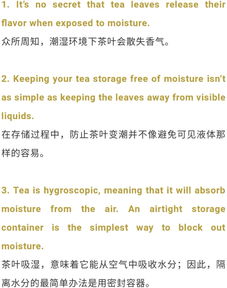茶叶用英文怎么说
When discussing tea leaves in the past tense in English, it is important to understand how verbs are conjugated. The past tense of the verb "to tea" is "teaed" or "tead." Therefore, when referring to tea leaves in the past tense, you would say "I teaed the leaves" or "She tead the leaves."

Tea leaves have been an integral part of various cultures for centuries, with a rich history and significance. They have been used not only for making tea but also for medicinal purposes, rituals, and ceremonies.
Historical Significance of Tea Leaves:
Tea leaves have a long history dating back to ancient China, where tea was first discovered. Legend has it that Emperor Shen Nong accidentally discovered tea when some leaves blew into his pot of boiling water. Since then, tea has become a staple beverage in many cultures around the world.
In the past, tea leaves were highly valued and often used as a form of currency in trade. The tea trade played a significant role in the economy of many countries and even led to the infamous Boston Tea Party in 1773, a key event in the American Revolution.
Uses of Tea Leaves in the Past:
Tea leaves were not only used for making tea but also for their medicinal properties. In traditional Chinese medicine, tea leaves were believed to have healing powers and were used to treat various ailments.
Furthermore, tea leaves were used in rituals and ceremonies in many cultures. In Japan, the tea ceremony, known as "chanoyu," is a highly ritualized practice that involves the preparation and consumption of matcha, a powdered green tea made from tea leaves.
Guidance for Using Tea Leaves:
When using tea leaves, it is important to consider the type of tea and the brewing method to ensure the best flavor. Different types of tea leaves require different brewing temperatures and steeping times to bring out their unique flavors.
For example, green tea leaves are best brewed at lower temperatures to prevent bitterness, while black tea leaves can withstand higher temperatures for a bolder flavor. Experimenting with different brewing methods and tea leaves can help you discover your preferred taste profile.
In conclusion, tea leaves have a rich history and cultural significance that extends far beyond just being a beverage. Understanding the past uses and significance of tea leaves can deepen your appreciation for this versatile and beloved ingredient.
本文 同格科技网 原创,转载保留链接!网址:http://www.tonggekeji.com/post/2814.html
1.本站遵循行业规范,任何转载的稿件都会明确标注作者和来源;2.本站的原创文章,请转载时务必注明文章作者和来源,不尊重原创的行为我们将追究责任;3.作者投稿可能会经我们编辑修改或补充。









